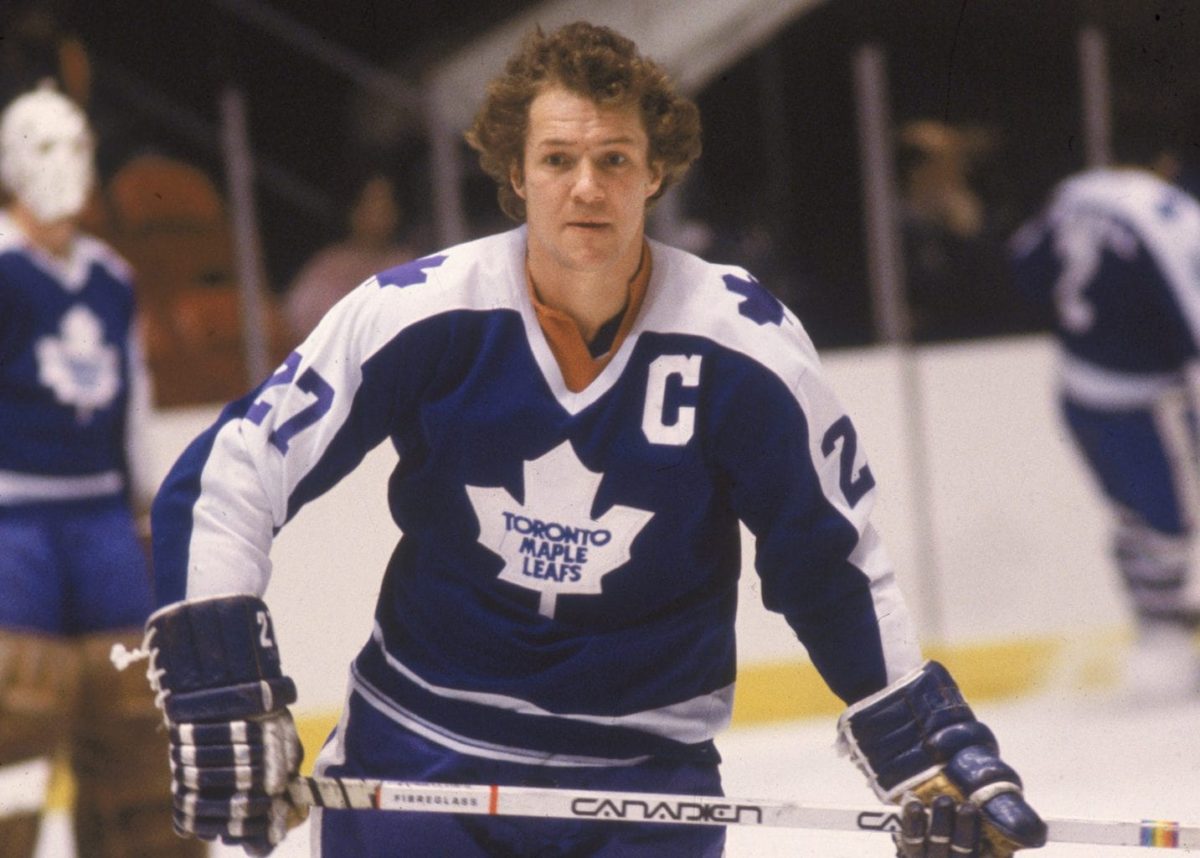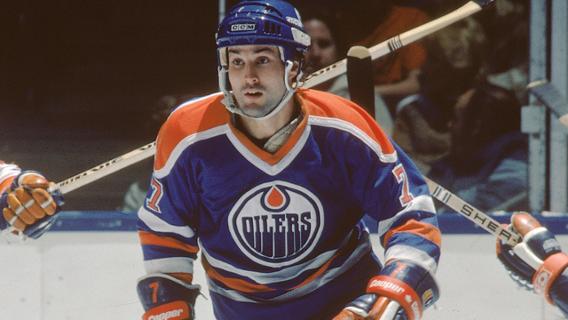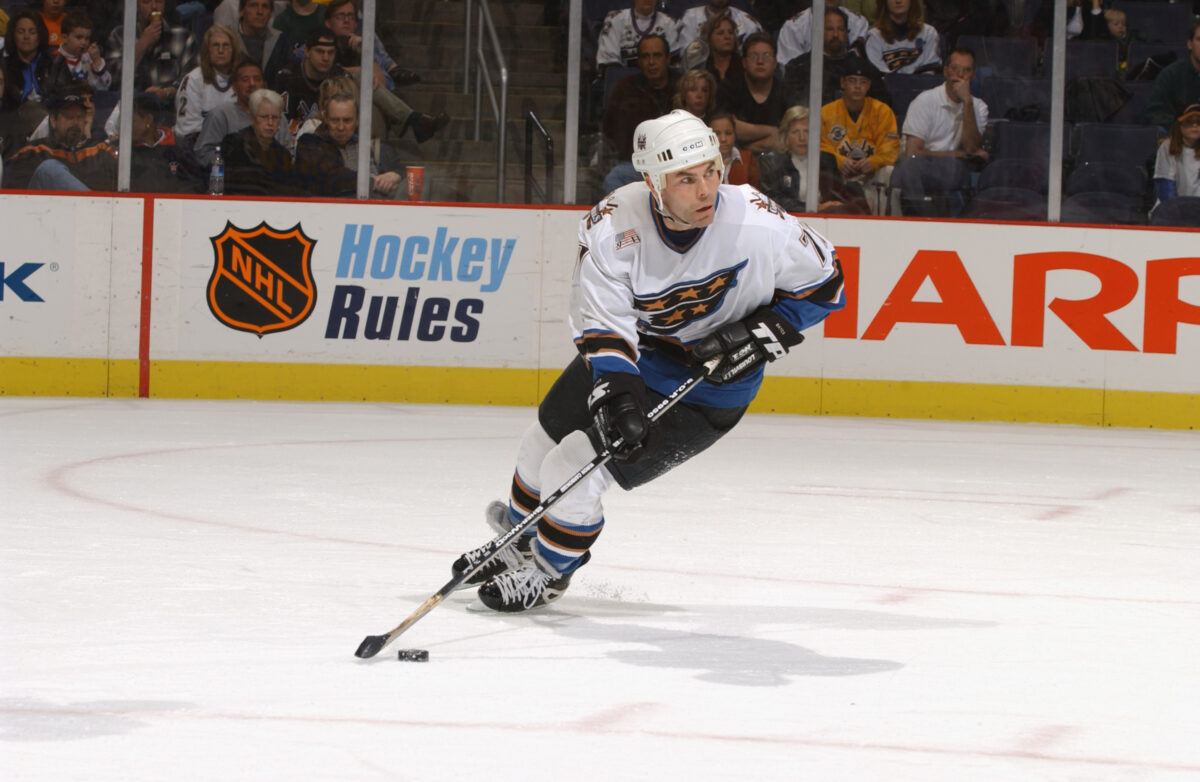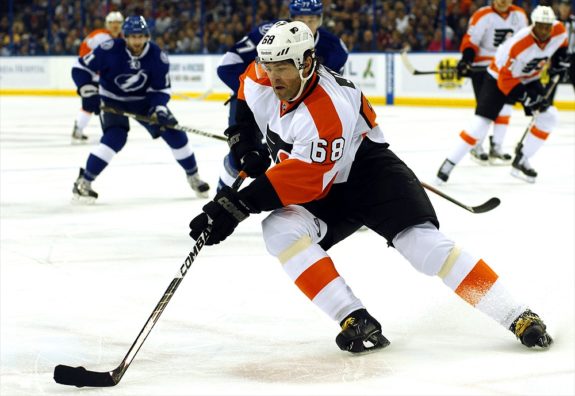Throughout the storied history of the Philadelphia Flyers, legends like Bobby Clarke, Bernie Parent, and Eric Lindros have captivated the fan base in some of the franchise’s greatest moments. Big name acquisitions like Chris Pronger, Peter Forsberg, and Jeremy Roenick have experienced memorable success after longer and more prominent stints in other organizations.
However, some of the best hockey players ever to wear orange and black did so later in their careers after building Hall of Fame resumes with other organizations. Five of the top 22 scorers in NHL history played for the Flyers at some point during their careers, but Mark Recchi is the only one of the group who scored more points with the Flyers than with any other franchise. Did you forget about five Hockey Hall of Famers who stopped in Philadelphia for a “cup of coffee” past their prime years?
Darryl Sittler
Darryl Sittler became one of the most decorated Toronto Maple Leafs of all time during his first 12 seasons in the NHL. The Kitchen, ON native and former London Knights star is commonly remembered for an astounding 10-point performance against the Boston Bruins in 1976. Sittler’s tenure in Toronto ended abruptly, however. Former Maple Leafs owner Harold Ballard angered his superstar by trading Lanny McDonald in 1982, and Sittler ultimately forced his way out.

The Flyers sent Rick Costello, a 1982 second-round pick, and future considerations that became Ken Strong for the 31-year-old Sittler, the youngest of the five Hall of Famers on this list at the time of his Philadelphia debut. He scored 84 goals and added 94 assists in 191 games over three seasons for the Flyers. His 43-goal effort in 1982-83 was just two shy of his career best.
Related: 15 Minutes With Maple Leafs Legend Darryl Sittler
During the 1980s, the Flyers advanced to three Stanley Cup Finals and won 12 playoff series. However, Sittler’s teams lost in the opening round of the playoffs in each of his three seasons. The unlikely timing stayed consistent with the career of one of the game’s greatest players who never enjoyed extensive playoff success. Philadelphia traded Sittler to the Detroit Red Wings the day before the 1984-85 season began. He played just 61 games in the final season of his career with the Red Wings while the Flyers won the Wales Conference.
Dale Hawerchuk
Long-time Winnipeg Jets star Dale Hawerchuk has his #10 jersey retired in the rafters for the current Arizona Coyotes franchise. He also spent five good seasons with the Buffalo Sabres in the early 1990s. However, his production slipped in his only season with the St. Louis Blues at age 32 in 1995-96. The Flyers geared up for a playoff run in March 1996 by dealing Craig McTavish for the aging center in a one-for-one swap.
Hawerchuck got off to a fast start with 20 points in 16 games in the remainder of the regular season. He added 12 goals and 22 assists in 51 games for the Flyers in 1996-97. He played in 17 playoff games during the run to the 1997 Stanley Cup Final but sat out the decisive loss to the Red Wings and never played in the NHL again.
Paul Coffey
With an aging Hawerchuk already on the roster, the Flyers acquired Paul Coffey and an additional draft pick from the Hartford Whalers in December 1996 for Kevin Haller and two picks. The 35-year-old defenseman had won two Norris Trophies as a member of the Edmonton Oilers dynasty of the 1980s. With the benefit of passing to Wayne Gretzky and Mark Messier, he finished one shy of tying the highest single-season point total in NHL history among defensemen with 138 in 1984-85. Coffey left Edmonton because of a financial dispute that served as somewhat of a precursor to Gretzky’s departure the following year.

He also helped put the Pittsburgh Penguins on the map in his first three seasons with the franchise. Consecutive 100-point efforts in 1988-89 and 1989-90 and a key role for the franchise’s first Stanley Cup team in 1990-91 cemented his status in Penguins history before they became one of the chief rivals to the Flyers. After 49 additional playoff games with the Red Wings in four seasons during a window of Stanley Cup contention in the 1990s, NHL fans looked at Coffey as somewhat of a constant on the blue line for whatever team employed him come playoff time.
Coffey wasn’t anywhere close to the same puck-moving catalyst with a lengthy list of league records among defensemen by the time he got to the Flyers. A combination of aging and deflated offensive numbers as the style of the 1980s shrunk in the distance held Coffey to eight goals and 47 assists in 94 games for Philadelphia.
The four-time Stanley Cup champion played 17 of the 19 playoff games during Philadelphia’s run to the Stanley Cup Final in 1997 while Eric Desjardins filled the role as the team’s top defenseman. However, like his veteran teammate Hawerchuk, he found himself out of the lineup by the time the series was decided. Coffey remarkably played for three more NHL teams after the Flyers before retiring at age 39.
Adam Oates
The Flyers sent their upcoming first, second, and third-round picks and Maxime Ouellet to the Washington Capitals on deadline day in March 2002 to acquire 39-year-old Adam Oates. The lucrative package would’ve been justified if Oates was still the same star player fans had seen with the Red Wings, Blues, Bruins, and Capitals for the better part of his 16 NHL seasons. However, the Flyers didn’t properly evaluate an impending unrestricted free agent well past his prime.

Oates was an incredibly gifted passer who currently sits eighth in NHL history with 1079 assists. He faired relatively well in Philadelphia in a short, 14-game game stint for the remainder of the 2001-02 regular season. However, Patrick Lalime and the Ottawa Senators stifled the Flyers in the opening round of the 2002 Stanley Cup Playoffs, holding them to just two goals in a five-game series. Both goals were assisted by Oates. He signed with the Mighty Ducks of Anaheim during the offseason.
Jaromír Jágr
Jaromír Jágr played three seasons in the Kontinental Hockey League (KHL) from 2008-2011, but a plan to return to North America for the 2011-12 season raised some eyebrows around the NHL. He stunned the hockey world by signing a one-year deal with the Flyers on July 1, 2011, when Pittsburgh seemed like the logical destination.
In his first two NHL seasons, Jágr became a Penguins hero playing alongside Mario Lemieux on the franchise’s first two Stanley Cup teams. He added five Art Ross Trophies in seven seasons from 1994-95 through 2000-01. A fairly messy split between Jágr and the organization seemed like ancient history, and a contending Penguins team could’ve used the crafty veteran on a cheap deal.

Former Flyers general manager (GM) Paul Holmgren won a bidding war and locked up Jágr for $3.3 million. He got a chance to play on the top line with budding superstar Claude Giroux and contribute with significant power-play minutes, whereas the presence of offensive stalwarts like Sidney Crosby, Evgeni Malkin, and James Neal might’ve limited his usage with the Penguins. Celebrated Stanley Cup hero Maxime Talbot also surprisingly jumped ship to sign with the Flyers on the same day.
Jágr settled in well to a fitting role for a highly-skilled player past his prime. He finished his only season in Philadelphia with 19 goals and 35 assists in 73 games. The Flyers defeated the Penguins in the opening round of the Stanley Cup Playoffs in one of the wildest series in NHL history. After building a reputation as a hated opponent for three rival teams, Jágr endeared himself to Flyers fans as a veteran who helped pave the way for Giroux to grow into his role as one of the greatest players in franchise history.
After he walked in free agency in 2012, Jágr played for five more NHL teams. He last played in the NHL at age 45 in 2017-18, but he has gone on to play four more professional seasons in Czechia. He played 43 games in 2021-22 and celebrated his 50th birthday on Feb. 15. He’ll easily find himself in the Hall of Fame shortly after he finally hangs up the skates.
Flyers Trend
Most Stanley Cup contenders find useful roles for veteran players on cheap deals who have achieved playoff success in other organizations. Corey Perry has reached the Stanley Cup Final in three consecutive seasons with three different teams in the late stages of his career. While the strategy of roster construction has its advantages, the Flyers allowed it to reach a mode of desperation at points during the 1990s in the cases of Hawerchuk, Coffey, and Oates.
Former owner and franchise founder Ed Snider poured his life into the Flyers, and his aggressive spending and organizational practices indicated the willingness to do anything to win. The franchise once got involved in discussions with every big-name player who became available. Whether or not they were successful in Philadelphia, some of the greatest players in NHL history have worn a Flyers sweater.